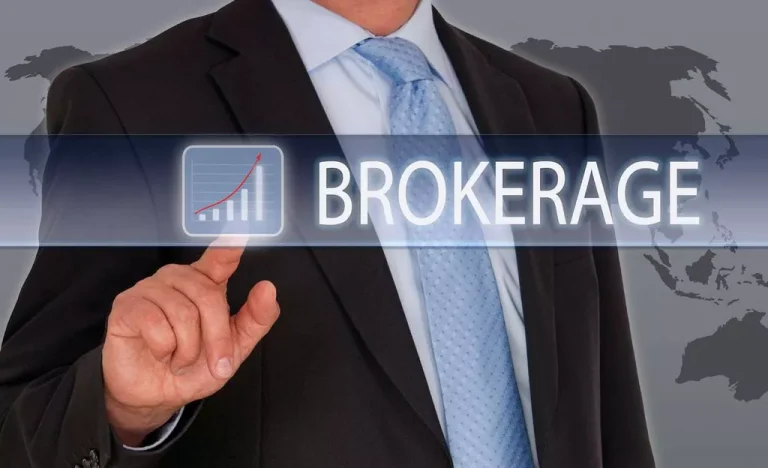Exchange-Traded Funds and Products
Content
The ETPs cover https://www.xcritical.com/ a wider range of products such as ETFs, Exchange Traded Notes (ETNs), and Exchange Traded Commodities (ETCs). Spot ETFs’ increased accessibility and legitimacy likely attracted a significant influx of institutional investors. With their vast pools of capital, these institutions could have further bolstered the crypto market, potentially leading to greater stability and price appreciation. The success of the first Bitcoin ETF likely paved the way for similar vehicles focused on other major cryptocurrencies like Ethereum.
Bybit Pioneers Copy Trading for Gold & FX Markets for Crypto Communities
ETPs trade on a stock exchange and offer leverage and track underlying etp vs etf security, index, or financial instruments. They can be benchmarked to various securities including commodities, currency, stocks, and bonds. Some ETPs gear investments intentionally gear the investment through leverage or futures which increases the risk and notional exposure. ETPs use financial engineering to magnify the returns on a different market. ETPs not only provide a platform for portfolio diversification but also enhance the financial ecosystem’s adaptability, allowing investors to respond swiftly to market changes and opportunities.
Grant Cardone’s Controversial Bet: Why He’s Investing In Collectibles, Not Just Stocks
While ETFs and ETPs may initially seem complex, understanding their nuances can significantly improve your investment strategy. Unlike mutual funds and other traditional investment funds, ETFs and ETPs offer the flexibility of trading throughout the day on stock exchanges, providing real-time pricing and greater liquidity. ETPs offer investors an efficient AML Risk Assessments means of gaining exposure to diverse assets traded on stock exchanges. While ETFs are a subset of ETPs regulated by the SEC under the 1940 Investment Company Act, other ETPs may fall under additional regulations depending on their assets.
Exchange-Traded Product (ETP) vs. Exchange-Traded Fund (ETF) Explained
ETPs differ from traditional investment options, such as mutual funds, in their structure and tradability. ETP shares are traded on stock exchanges throughout the trading day at market prices, providing intraday liquidity and flexibility. Traditional options often involve buying or selling at the end of the trading day at the NAV price. Additionally, ETPs can track various indices, commodities, or currencies, allowing for more targeted investment strategies.
This email contains the opinions of the author, and such opinions are subject to change without notice. No guarantee is made to the accuracy of the information provided which has been obtained from sources believed to be reliable. This email and the information contained herein is intended only for the use of persons (or entities they represent) to whom it has been provided. The value of an investment may go down as well as up and can result in losses, up to and including a total loss of the amount initially invested. Investments may involve numerous risks including, among others, company risks, general market risks, credit risks, foreign exchange risks, interest rate risks, geopolitical risks, and liquidity risks.
The assets of the ETCs are a debenture issued by a bank, collateralized by the commodity the ETC tracks. ETCs are similar to ETFs and offer the same advantages; however, they track the performance of a single commodity or a basket of commodities. In order to achieve their investment objectives ETCs either use a physical/spot approach or futures contracts. Unlike ETFs, in Europe ETNs are not regulated under UCITS, which makes them somewhat less stringent in compliance.

In part I of this guide, I shall give a broad definition of the different Exchange Traded Products (ETPs) available. Future chapters of the guide, due in coming weeks, will provide more detailed analysis into key aspects of these financial products, with a view to help our readers make well-informed investment choices. Financial literature is flooded with acronyms many investors struggle to keep up with.

Like ETFs, ETNs trade on exchanges, and their returns are linked to a market index or other benchmark. But ETNs aren’t pooled vehicles and don’t buy or hold shares of stock or other underlying assets. They’re unsecured debt obligations that, similar to bonds, are typically issued by a bank or other financial institution. Unlike bonds, however, ETNs generally don’t pay periodic interest to investors (though some that are income-focused might), and the return is primarily based on the performance of the index or benchmark to which they are linked.
- First, ETFs usually hold a broad basket of securities, including stocks, bonds, crypto, or other assets, which helps boost their liquidity.
- These new offerings might boast different expense ratios, investment strategies, and potentially even leverage options, providing investors with a more tailored way to gain exposure to Bitcoin.
- ETCs are not subject to UCITS and do not have to comply with its diversification requirements.
- Until then, stock exchanges focused on individual company stocks rather than pooled investment products.
ETFs usually are plain vanilla instruments where investors invest the full amount on the stock exchange for the NAV. However, investing through ETP provides investors with an option of leverage where the same amount of investment can offer a higher NAV. It also offers higher returns if the trend is captured and predicted appropriately.

Our mission is to empower readers with the most factual and reliable financial information possible to help them make informed decisions for their individual needs. Our writing and editorial staff are a team of experts holding advanced financial designations and have written for most major financial media publications. Our work has been directly cited by organizations including Entrepreneur, Business Insider, Investopedia, Forbes, CNBC, and many others. In the United States, the Securities and Exchange Commission (SEC) oversees ETPs. There are several types of ETPs, including Exchange-Traded Funds (ETFs), Exchange-Traded Notes (ETNs), and Exchange-Traded Commodities (ETCs). Please refer to the Prospectus of the ETPs and to the KIID before making any final investment decisions.
In the event of any inconsistency between these Terms and any Other Agreements, the Other Agreements shall govern. You may use your browser to download or print out a copy of these Terms for your records. For the purposes of data protection law, GraniteShares is a data controller in respect of your personal data. GraniteShares is responsible for ensuring that it uses your personal data in compliance with data protection law. Used to keep track of a visitor’s identity and provide personalised content.
Investing in ETPs offers numerous benefits, such as diversification, lower costs, tax efficiency, and ease of trading. Additionally, leveraged or inverse ETFs, which aim to amplify returns or profit from declines, can have tax implications due to their daily resets. Each of these has different structures and focuses on different types of investments. Did you know that the modern investing landscape boasts thousands of ETFs or Exchange-Traded Funds?
The articles and research support materials available on this site are educational and are not intended to be investment or tax advice. All such information is provided solely for convenience purposes only and all users thereof should be guided accordingly. The main types of ETPs include exchange-traded funds (ETFs), exchange-traded notes (ETNs), and exchange-traded commodities (ETCs). ETPs provide investors with the opportunity to gain exposure to a variety of asset classes, sectors, and strategies through a single tradable instrument. ETCs are not governed by UCITS regulations and must not adhere to its diversification requirements. As a result, these products generally carry higher risks than ETFs due to their credit risk and lack of asset backing.
